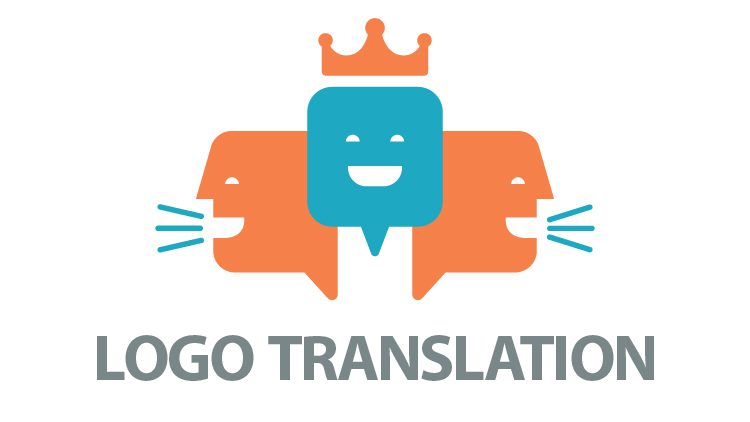
What is logo translation?
Logo translation refers to converting a company's logo into another language or cultural context while preserving its original design elements and message. This type of language translation is crucial for global businesses operating in multiple countries and markets, as it ensures that their brand message remains consistent and effective in all regions.
Professional translation companies often provide logo translation services requiring high accuracy and cultural awareness. These services involve working with designers to create a translation that perfectly captures the original logo's essence without compromising its visual impact or message.
Logo translation can also involve adapting the logo's design elements to suit the cultural context of the target language or audience. This can include changing colors, shapes, or symbols to better align with the values and preferences of a specific region.
Challenges of logo translation can include navigating language combinations that do not have a direct equivalent for certain design elements or words. For example, translating a logo from English to Chinese may require custom translation to adapt design elements and messages to Chinese culture and language. Another challenge is ensuring the logo's original design is not lost in translation while effectively conveying the intended message.
Despite these challenges, successful logo translation can greatly enhance a company's international presence and reputation. Some notable examples of successful logo translation include Coca-Cola's unique script font, effectively translated across various cultures and languages, and Nike's "swoosh" logo, which has become a recognizable symbol worldwide.
Companies can work with a translation logo maker or designer to ensure their logo is customizable and adaptable to different cultures and languages to achieve effective logo translation. They can also partner with professional translation companies to provide accurate translation and content localization for their commerce content and marketing materials. Successful logo translation is key to building a global brand that resonates with diverse audiences.
Importance of logo translation in global business
In today's global business environment, logo translation has become critical to effective communication with customers and stakeholders from different world regions. A logo is a visual representation of a brand and serves as the face of a company, so it must be tailored to the culture and language of its intended audience.
A company's message can be misinterpreted or lost in translation without a perfect logo translation. For example, translating a logo from English to another language may result in unintended connotations or cultural associations that can negatively affect the brand's image and reputation.
A good example of a successful logo translation is the auto-translation of the McDonald's logo, which is instantly recognizable worldwide, thanks to its simple and universally appealing design. Another example is the Aramaic translation of the Coca-Cola logo in the Middle East, which took into account the local language and culture, resulting in a more personalized and effective message.
Challenges of logo translation can include maintaining the original logo's design and identity while ensuring it is culturally and linguistically relevant. Conventional translation may not always be sufficient for a logo, so customizable translation or cloud translation services can be utilized to ensure accuracy and consistency across all languages.
Ultimately, effective logo translation is a crucial element in building brand awareness and creating a connection with global audiences. With the right approach and attention to detail, a logo can be successfully translated and adapted for use across a wide range of cultures and languages, positively impacting a company's global business strategy.
Challenges of logo translation
Logo translation can be challenging, as it requires much more than simply translating the words in the logo from one language to another. It involves accurately conveying the brand's message and values while respecting cultural nuances and visual aesthetics.
One of the primary challenges of logo translation is that not all words and concepts can be directly translated into other languages. This means the logo designer must find ways to communicate the same message using different words or symbols. The designer must also ensure the new statement does not contradict or diminish the brand's original message.
Image translation is another challenge in logo translation. A logo may include images or symbols that hold cultural significance and may not translate to another culture similarly. For example, an owl symbolizes wisdom and knowledge in Western culture, while in some cultures, it is seen as a bad omen. This makes it difficult for the designer to find an image that conveys the same meaning and significance to the target audience.
Design in minutes is also a challenge when it comes to logo translation. The designer may not have much time to create a logo that accurately communicates the brand's message and values. They may also face tight deadlines and strict budgets, which limits their ability to conduct thorough research and create a visually appealing and effective logo.
Despite the challenges of logo translation, global businesses must invest in this process. A well-translated logo can increase brand awareness, strengthen brand identity, and boost sales in foreign markets. To overcome the challenges of logo translation, working with experienced designers knowledgeable about the target audience and cultural differences is essential. The designer should also take the time to conduct thorough research and collaborate with the client to create a logo that accurately reflects the brand's message and values.
Examples of successful logo translations
When translating logos for global audiences, there are many successful examples to learn from. Here are a few:
One of the world's most recognizable logos, Coca-Cola's design is consistent across all markets, but the wording is translated to match the local language. This not only helps with brand recognition but also helps connect with local audiences.
Another global brand that has successfully translated its logo, McDonald's, uses a consistent design but varies the wording to match the local language. They also adapt the logo to incorporate local cultural references, such as the "Golden Arches" being made into chopsticks in some Asian markets.
When Airbnb expanded globally, it realized that its logo was not as recognizable in all cultures. They went through a rebranding process and developed a new logo that is more universally understood, with the "Belo" symbol being representative of belonging and welcoming.
Pampers is another brand that successfully adapted its logo for different markets. Their logo includes an image of a baby's bottom, and in some markets, they adapted the design to show extra skin tones, hair textures, and clothing styles to reflect the local market better.
These examples show that successful logo translation involves more than just word-for-word translation. It requires a deep understanding of the local culture and audience and a willingness to adapt and evolve the design to better connect with those audiences.
Tips for effective logo translation
- Start with clearly understanding your brand message and target audience in the local market. This will help you to choose the right words and visual elements for the logo translation that resonate with your local customers.
- Use professional translation services specializing in logo design and have experience working with your industry and target market. This will ensure the translation is accurate, culturally appropriate, and reflects your brand values.
- Consider the linguistic and cultural nuances of the target market. Sometimes, a word or image that works well in one language or culture may not have the same impact or meaning in another. Be open to making necessary adjustments to the logo design and message.
- Keep it simple. The best logos are easy to recognize and remember, so avoid complex designs, multiple fonts, or too many colors. A simple yet powerful design will help your logo stand out and be memorable in any language.
- Test your logo in the target market before launching it. This can help you to get feedback and make any necessary tweaks to the design and message before investing in a full-scale marketing campaign.
Following these tips, you can create a logo translation that effectively communicates your brand message and resonates with your global audience. With the right translation strategy, your logo can be a powerful tool for building brand awareness and driving business growth in new markets.
Frequently Asked Questions
Yes, a logo can be translated into other languages by adapting the text elements of the logo to reflect the desired language while maintaining the overall design and visual identity.
When searching for a Greek translator, consider their language proficiency, experience in the field or subject matter you require, professional certifications, membership in translation associations, and client reviews or testimonials.
The text elements of a logo, such as the brand name or tagline, can be solved. Other graphical elements, such as symbols or icons, generally remain the same to maintain brand recognition and consistency.
There are various online platforms where you can find freelance Greek translators. Websites like Upwork, Freelancer, and Freelance translators & Translation companie offer opportunities to connect with experienced freelance translators and review their profiles and previous work.
When solving a logo, it's important to consider cultural nuances, the length and readability of translated text, font compatibility, and maintaining visual harmony. The translated version should convey the same brand essence and be visually appealing.
https://www.universal-translation-services.com/logo-translation-is-that-possible/


Comments
Post a Comment